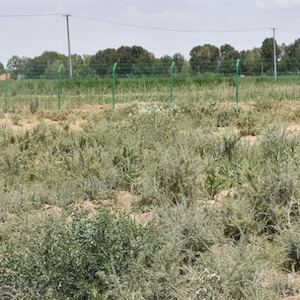Different irrigation regimes influence soil salt ion and soil nutrient status in Lycium ruthenicum cultivation

All claims expressed in this article are solely those of the authors and do not necessarily represent those of their affiliated organizations, or those of the publisher, the editors and the reviewers. Any product that may be evaluated in this article or claim that may be made by its manufacturer is not guaranteed or endorsed by the publisher.
Authors
In arid areas, irrigation with the available brackish water is common because of scarce freshwater resources. However, the impact of different irrigation regimes on soil salt ion and soil nutrient status have rarely been studied in the Qaidam Basin in northwestern China. To investigate this, two treatments (flood and drip irrigation) were established in a randomized block design on Lycium ruthenicum grown on a farm in the Qaidam Basin, and soil salt ion and soil nutrients at different soil depths were measured. The soil water content (SWC) was higher at each soil depth under flood compared with drip irrigation, except for top soil (0–5 cm), and the variations of SWC with soil depth differed between flood and drip irrigation. Moreover, soil salt ion content was higher under flood than drip irrigation at each soil depth, while soil nutrient contents were higher under drip irrigation, and were reduced remarkably as soil depth increased under both irrigation types. Consequently, drip irrigation with brackish water can reduce soil salinization and maintain high soil nutrient levels for irrigated L. ruthenicum in arid regions. In the context of brackish water irrigation, drip irrigation is relatively more appropriate for the cultivation of L. ruthenicum than flood irrigation.
Supporting Agencies
National Natural Science Foundation of China, Chinese Academy of Sciences, Science and Technology Program of Gansu ProvinceHow to Cite

This work is licensed under a Creative Commons Attribution-NonCommercial 4.0 International License.
PAGEPress has chosen to apply the Creative Commons Attribution NonCommercial 4.0 International License (CC BY-NC 4.0) to all manuscripts to be published.

 https://doi.org/10.4081/jae.2025.1815
https://doi.org/10.4081/jae.2025.1815



